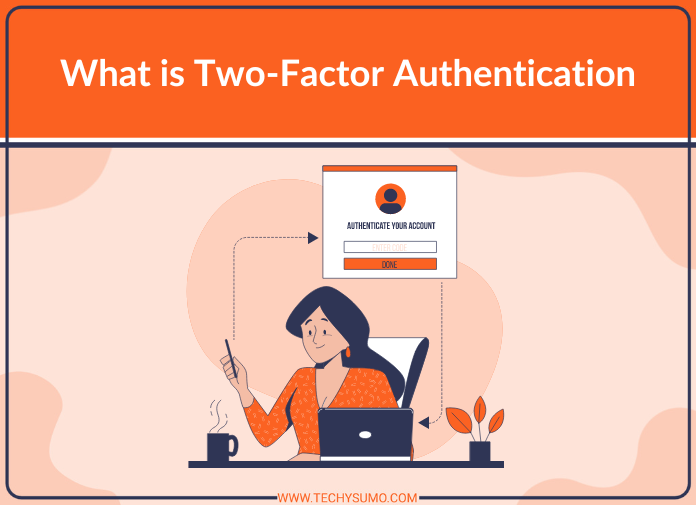Securing our digital lives has never been more critical in an era of ever-present cyber threats. One of the most effective measures for enhancing online security is Two-Factor Authentication (2FA). But just how secure is 2FA? Let’s delve into the intricacies of this technology and assess its strengths and vulnerabilities.
Table of Contents
What is Two-Factor Authentication?
The Basics of 2FA
Two-factor authentication (2FA) is a security process that requires users to provide two distinct forms of identification to access their accounts. This typically involves something you know (like a password) and something you have (like a smartphone).
If you want to learn more, here is the blog that will help you learn about two-factor authentication.
How 2FA Works
When you log into an account with 2FA enabled, you first enter your username and password. Then, you’re prompted to verify your identity using a second factor, such as a code sent to your phone or generated by an authentication app.
Types of Authentication Factors
- Knowledge Factors: Something you know, such as a password or PIN.
- Possession Factors: Something you have, like a smartphone or a security token.
- Inherence Factors: Something you are, such as a fingerprint or facial recognition.
The Benefits of Two-Factor Authentication
Enhanced Security
By requiring a second verification form, 2FA significantly reduces the chances of unauthorized access, even if your password is compromised.
Prevention of Unauthorized Access
2FA acts as a formidable barrier against hackers, making it much harder for them to breach your accounts without having physical access to your second factor.
Protection Against Phishing Attacks
Even if a hacker manages to steal your password through phishing, they would still need the second factor to access your account, providing an extra layer of security.
Standard Methods of Two-Factor Authentication
SMS-Based 2FA
This method involves sending a one-time code to your mobile phone via SMS. You enter this code to complete the login process.
App-Based 2FA
Applications like Google Authenticator or Authy generate time-based codes you enter with your password.
Hardware Tokens
Devices like YubiKey provide a physical token that you plug into your computer or tap against your phone to authenticate.
Biometric Verification
This method uses biological traits, such as fingerprints or facial recognition, to verify your identity.
The Security of SMS-Based 2FA
How SMS-Based 2FA Works
A code is sent to your phone via SMS when you log in. You enter this code to gain access to your account.
Vulnerabilities and Risks
SMS-based 2FA is vulnerable to SIM swapping attacks, in which hackers transfer your phone number to a new SIM card and intercept the verification codes.
Mitigation Strategies
To enhance security, use app-based or hardware token methods instead of relying solely on SMS-based 2FA.
The Security of App-Based 2FA
How App-Based 2FA Works
Apps like Google Authenticator generate a time-based code on your phone, which you use along with your password.
Advantages Of SMS-Based 2FA
App-based 2FA is generally more secure because it doesn’t rely on your mobile carrier, reducing the risk of interception.
Potential Risks and Solutions
Ensure your phone is secure, and consider backing up your authentication app in case you lose your device.
The Security of Hardware Tokens
How Hardware Tokens Work
Hardware tokens generate a one-time code or use NFC/USB to authenticate. They are physically connected or tapped to your device.
Security Benefits
Hardware tokens offer high security as they are not susceptible to remote attacks.
Challenges and Considerations
The main challenge is managing the token physically. If it is lost or damaged, access recovery can be complicated.
The Security of Biometric Verification
How Biometric Verification Works
Biometric methods use unique biological traits, such as fingerprints or facial recognition, for authentication.
Strengths of Biometric 2FA
Biometrics are hard to replicate, providing a robust security layer. They are also convenient and fast.
Potential Security Concerns
Concerns include the risk of biometric data theft and the difficulty of changing your biometric information if compromised.
Common Attacks on Two-Factor Authentication
SIM Swapping
Attackers trick your mobile carrier into transferring your phone number to their SIM card, intercepting SMS codes.
Phishing Attacks
Hackers create fake websites to steal your credentials and second-factor codes.
Man-in-the-Middle Attacks
Hackers intercept communication between you and the service to steal login information.
Case Studies of 2FA Breaches
Notable Breaches Involving 2FA
- Reddit (2018): Attackers bypassed SMS-based 2FA to access user data.
- Instagram (2020): SIM swapping attacks compromised high-profile accounts.
Lessons Learned from These Breaches
These breaches highlight the importance of choosing secure 2FA methods and staying vigilant against evolving threats.
Improving the Security of Two-Factor Authentication
Best Practices for Users
- Use app-based or hardware token 2FA.
- Regularly update your passwords.
- Be cautious of phishing attempts.
Recommendations for Organizations
- Implement multi-factor authentication (MFA) combining several methods.
- Educate employees and users about security best practices.
- Monitor and respond to potential threats promptly.
The Future of Two-Factor Authentication
Emerging Technologies
Advancements in biometric technology and the integration of AI for behavior-based authentication are shaping the future of 2FA.
The Role of AI and Machine Learning
AI can enhance 2FA by analyzing user behavior patterns to detect real-time anomalies and potential security threats.
Conclusion
Two-factor authentication is a powerful tool in the fight against cybercrime. While no security measure is foolproof, 2FA significantly strengthens your defences. Understanding the various methods and potential vulnerabilities allows you to make informed decisions to protect your digital assets.



